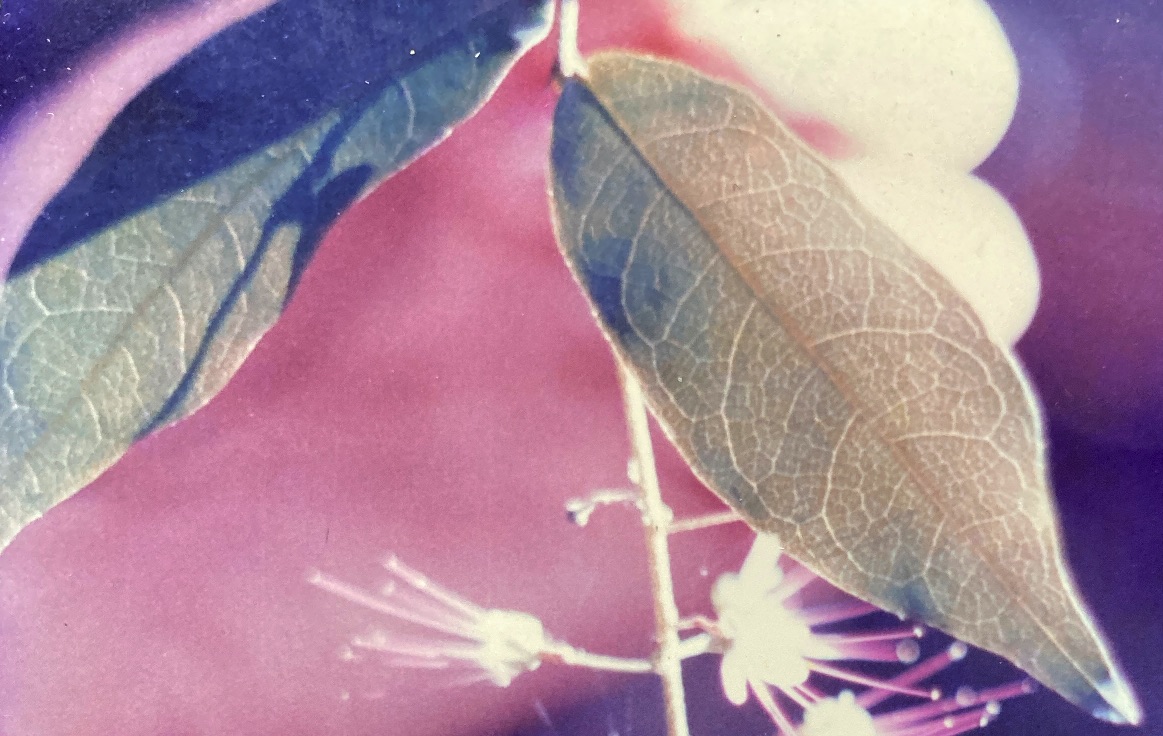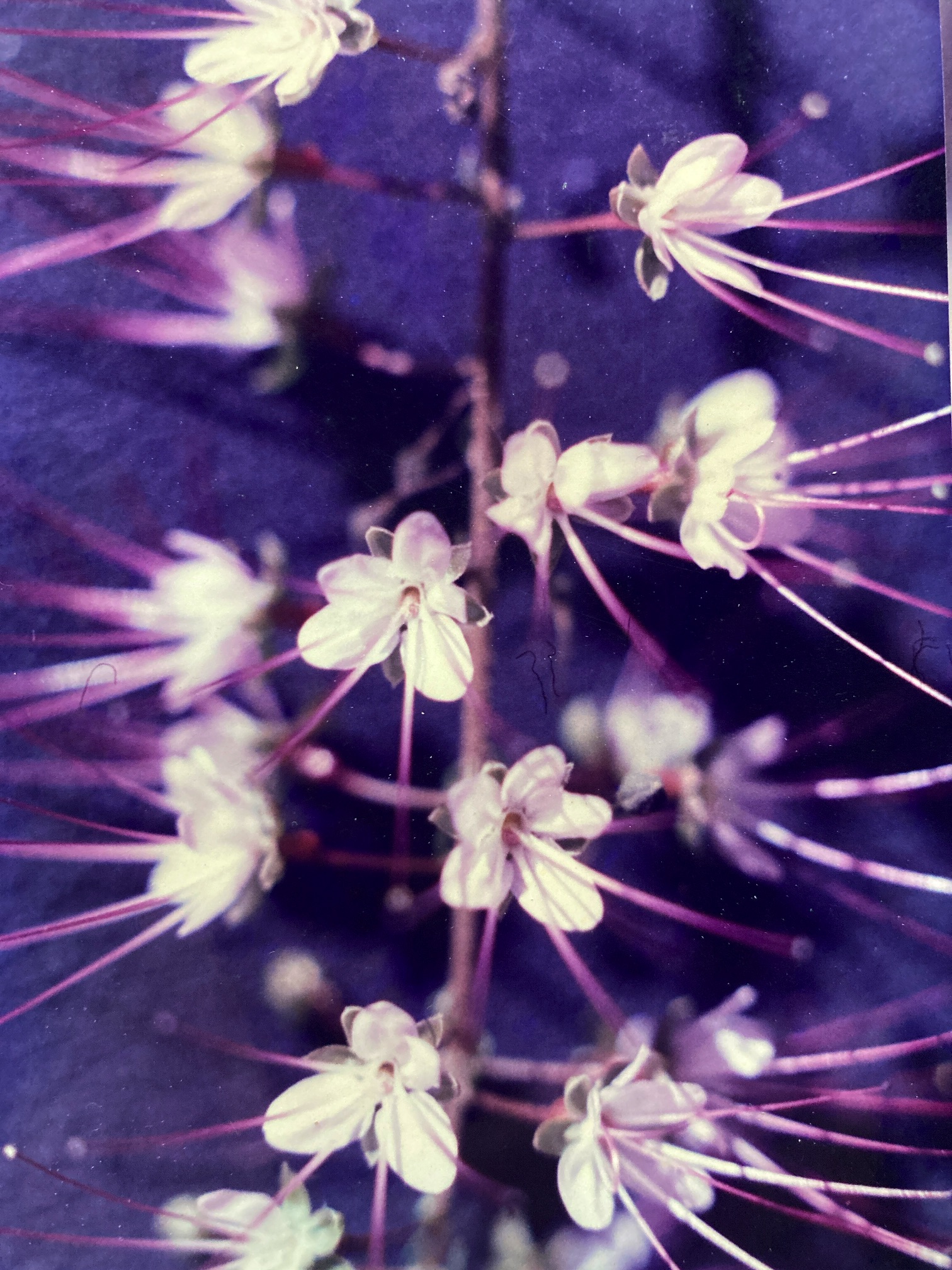Hirtella racemosa Lam.
Chrysobalanaceae
SERRECILLO
Tree: Occasional understory evergreen treelet (4-5 m) found growing in the lower layers of primary forests located on the well drained soils of hills, slopes, and ridges. With small leaves and a thin crown, this plant is quite inconspicuous when not decorated with the silky racemes of lavender flowers that are its hallmark.
Description: Serrecillo has a small trunk, rarely reaching 10 cm in diameter, and it is covered with smooth, gray bark. Branches are relatively few in number, and they emerge from the upper half of the bole. Long and spreading, these flexible limbs are completely foliated and they give Hirtella a relatively wide crown for its low stature and understory position. Still, the small size of Hirtella leaves and the paucity of its limbs make the crown thin and transparent.

Leaves (8 cm by 2.5 cm) are simple, alternately arranged and very nearly sessile. They are elliptical in shape, possessing slowly-tapering, well-developed drip tips and short petioles (2 mm). The blades themselves are smooth and finely textured with secondary veins, however their mid-ribs sport a thin pubescence (as do the young twigs). New growth occurs at different times during the year but mainly in the months of September and October.
Flowers (3.5 cm long by 0.8 cm in diameter) are produced in long (10 cm) terminal racemes that dangle vertically from the branch tips. Each flower, attached by a 1.5 cm stalk to the main axis of the raceme, consists of five small, green sepals; five delicate and even smaller violet petals; five long (2 cm), lavender stamens; and a similar pistil. All buds in a raceme blossom in unison, generating a cylindrical mass of lavender stamens that radiate outward from the raceme’s central axis (like a bottle brush). Punctuated by the soft flecks of violet petals, these blossoms can be a stunning sight. When illuminated from behind by the sun, this translucent inflorescence seems to glow with its own violet light. Flowering periods are sporadic and individual trees may be seen with blossoms anytime between September and April, but the most synchronized and abundant events occur in January and early February. Fruits are elongated (2 cm) berries that may be plump and juicy but are more often shriveled and pasty. They ripen from green to maroon or black and enclose a single, rod-shaped seed. Most fruiting occurs in February and March.
Similar Species: When in flower, this species is unmistakable. Even when sterile, however, it is the only tree of its stature with such small, alternately arranged leaves. Both Myrciaria floribunda and Eugenia argyre have similar heights and foliage sizes, but their leaves maintain a clearly opposite arrangement.
Natural History: Hirtella flowers are pollinated by insects and its fruits are probably foraged by birds – being located at the ends of the thin, flexible branches that are unreachable by relatively heavy, arboreal mammals (squirrels, etc.)
Uses: According to Zamora (1989), the flexible branches of this species are used in the fabrication of roofs.
Distribution: In Manuel Antonio National Park (MANP), Hirtella grows in dryer patches of primary forest where insolation levels are relatively high, as well as along some trailsides. In Costa Rica, this tree is native to the entire Pacific slope. It ranges from Mexico to the Brazilian amazon and Bolivia (Zamora, 1989).


